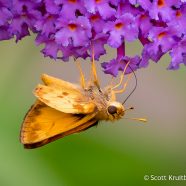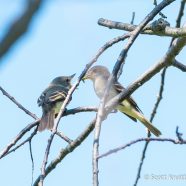Zabulon Skipper (Poanes zabulon)
No, the first photo was not flipped – that is how the Zabulon Skipper (Poanes zabulon) was enjoying some nectar. My neck hurts just looking at that…and can you imagine drinking upside down? Ouch. I’m glad it decided to flip over and relax afterwards. Scott Kruitbosch Conservation & Outreach Coordinator
Read MoreQuestion Mark & Zabulon Skipper
Earlier this week I was able to get quick but crushing views of this Question Mark (Polygonia interrogationis) that was immediately joined by a Zabulon Skipper (Poanes zabulon) as soon as I raised my camera. I’ll take it! And I will show you a closer look at each later this week… Scott Kruitbosch Conservation & Outreach Coordinator
Read MoreConeflower Seeds
Here is where I would be posting a photo of a gorgeous American Goldfinch feeding on the seed heads of mature Eastern Purple Coneflowers, but sadly whenever I am outdoors I either flush the birds unintentionally first, or I get to watch them without a camera in my hand. Fingers crossed for the future…but you should leave your coneflowers be and resist pruning them even when they are wilting and getting “ugly” so that the birds can enjoy a seed feast in the late summer and fall. Scott Kruitbosch Conservation & Outreach Coordinator
Read MoreFledgling Flycatcher
While some Willow Flycatchers (Empidonax traillii) are on the way south, like the bird I posted from last Friday evening, others are still finishing up raising the next generation. I photographed this cute family moment this past weekend while they kept their distance from me – please ignore the annoying branches obscuring the scene. I was happy enough to see that they had not fallen victim to a Brown-headed Cowbird. Good thing there are enough caterpillars to go around…any for me? Scott Kruitbosch Conservation & Outreach Coordinator
Read MoreMonarch on Coneflower
This Monarch butterfly (Danaus plexippus) certainly chose the correct color of coneflower to nectar on as photographed yesterday. It is now egg and caterpillar season! Have you found any on your milkweed?
Read More








